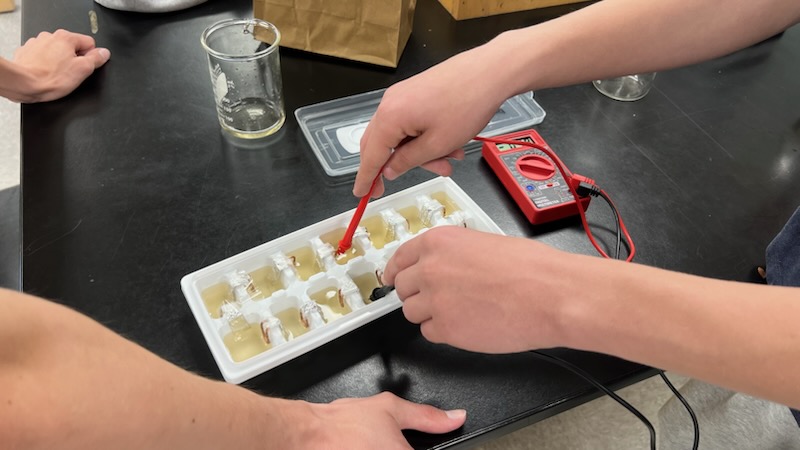Republished March 26, 2019
School community reflects on recent tragedies

(Originally published, Feb. 10, 2017)
Suicide rates among teenagers continues to be a leading cause of death and an ever present issue in Fresno County.
Suicide is either the second or third leading cause of death in ages 10-24, depending on the source.
California claims one of the lowest suicide rates in the United States, but it is slowly on the rise. America as a whole has seen an increase in suicidal rates–the highest in 30 years. Furthermore, there is an average of just over 5,240 suicide attempts by 7-12 graders everyday in America.
In Fresno County, there were 10 suicides from 2013-2015 according to the Fresno Bee. However, in 2016 alone, there were 11. The situation in the Fresno and Clovis area has received new amounts of attention due to a cluster of student suicides.
In light of the recent tragedies to local high school students, many are searching for potential reasons as to why anxiety, depression and other causes lead to suicide.
While there are many possible ideas, Amanda Lebda has emphasized two main thoughts. Lebda works as a marriage and family therapy intern at The Well Community Church.
“Social media is definitely adding to an isolation factor,” Lebda said. “People are able to put on one front on social media, but really they’re feeling a different way. They may feel isolated, depressed or some other symptom behind the scene that people don’t know about because people don’t see it on social media.
“Besides social media,” Lebda continued, “the expectations that are on teens now can definitely lead to depression. Expectations from parents and outside influences are big factors in suicidal ideation and eventually becoming hopeless, thinking, ‘I just can’t meet these expectations.”’
[soundcloud url=”https://api.soundcloud.com/tracks/305608293″ params=”auto_play=false&hide_related=false&show_comments=true&show_user=true&show_reposts=false&visual=true” width=”100%” height=”150″ iframe=”true” /]
In the leading causes of death in America, suicide makes the list at number ten. In 2014, roughly 43,000 people committed suicide in America. That is 13.4 people per 100,000 persons. According to the CDC, firearms, suffocation and poisoning are the top three methods used.
Aware of the recent tragedies, campus Principal Amy Deffenbacher is actively pursuing different ways to help students on campus. There are two counselors available one day a week during school hours, as well as a series of seminars led by professionals addressing it on campus for parents only, starting Feb. 6.
“The suicides on campuses near us recently have caught our attention because we’re not immune from it,” Deffenbacher said. “We don’t want to have to be on the other side of it trying to figure out what to do after suicide has happened when we know there are things we can do to help support and prevent.

“Unfortunately a lot of them have happened on the same campus,” Deffenbacher continued. “This leads many of us to wonder if there’s an underlying current of bullying, if that particular school culture has higher pressure or if the demographic of that neighborhood has an influence. When we ask kids what causes them to think suicidal thoughts or what causes them to be depressed, often they’ll say broken homes, pressure to do well in school or pressure to do well in sports.”
The following is a list of signs regarding suicide and depression to look for compiled from multiple sources and quotes.
In General
- Depressed mood for days, weeks, months.
- Feelings of sadness, emptiness, worthlessness or hopelessness.
- Diminished interest in something formerly pleasurable.
- Weight loss or weight gain.
- Not wanting to eat.
- insomnia or hypersomnia
- Easily agitated
- Fatigue or loss of energy
- The inability to concentrate, indecisiveness
- Withdrawal
- Headaches or stomach aches
- Suicidal thoughts
On Campus
- Sudden changes in behavior
- Sudden changes in academic behavior
- Increased absences
- Falling asleep in class
- Isolating themselves
- Acting out to get attention
One pediatrician from Northwest Pediatrics, who wanted to remain anonymous, focuses on the mental illnesses that can lead to suicidal thoughts. He encouraged anyone who has had these thoughts to stay connected with other people.
“I experience a lot of thought and talking about it,” the doctor said. “There’s a lot of depression, which is the main predisposing factor to suicide. Other mental illnesses that might lead to suicide are PTSD, chemical dependency, bipolar disorder and schizophrenia, but depression is the biggest.
“Staying connected is the best way to prevent anything from happening,” the doctor continued. “Stay connected with friendships, family, sports, clubs, youth groups and have a sense of personal mission. Just stay away from isolating yourself.”
For one Clovis Unified School District (CUSD) student who experienced depression, it came gradually and she credited it to stress, school and various changes in her life. While she wanted to remain anonymous, she feels thankful for the support of their school, family and friends.
“They show love, support and are willing to help,” she said. “You know that they’re always there and there’s always hope. But they could help more by talking about depression and what it really is. People struggling might hide keeping to themselves.
“To someone struggling,” she continued, “I would suggest exercising, seeing a doctor, reading the Bible, talking out your feelings, making relationships, making yourself do things, set a routine and think about what you’re thankful for.”

Marriage and Family Therapist and LMFT Adjunct Instructor at Fresno State Jennifer Engelbert, MS, talks about three different primary causes for depression.
“Three factors are primarily involved in causing depression,” Engelbert said. “Biology–the body doesn’t produce enough of a certain chemical, like serotonin, and no matter how good the person’s life is, they don’t have a sense of well being or happiness. Environment–trauma, loss, legal difficulties, unwanted pregnancy, pressure to achieve, conflict with loved ones, and being empty nesters could all be factors. Sociocultural–alienation, humiliation, academic failure, religious beliefs that condemn counseling or the use of medication to treat depressive symptoms, alcohol or drug abuse.”
Furthermore, Engelbert discusses a reason why suicides seem to be clustered. She also explains what to do if you do see someone struggling.
“Developmentally, a lot of things become trends among teens,” Engelbert said. “Sadly, suicide can also become an epidemic. ‘So and so killed himself and everyone is sad missing him. I want people to mourn me too and he’s free of his pain now. I want that, too.’
“When someone is exhibiting some or all of the above symptoms of depression, ask them if they are thinking about suicide,” Engelbert continued. “A direct question about suicidal thoughts seems scary and inappropriate, but it it the best way to help someone. Be direct!”
The National Suicide Prevention Lifeline is not just for those who are depressed or alone. Call 1-800-273-8255 in order to learn how to help others who are experiencing suicidal tendencies. Make that call for help. There is hope for everyone. Start a conversation by approaching someone with, “Let’s Talk.”
Counselors are available on campus to help provide support. Additionally, the first of a series of workshops led by local professionals took place in the Jackie Johnson Room, Feb. 6, for PARENTS only. The first called, Session 1: Navigating the Struggles of Anxiety, Depression, and Self Harm. There may be a slide presentation available through Michelle Warkentin at a later date. The second workshop and next issue is healthy dating relationships in March. A date and time is not yet available. The third installment, safe driving and is tentatively scheduled for April.
In the wake of tragedies or struggles, you are not alone. Call 1-800-273-8255 to talk to someone.
The following suicide public service announcement was created and filmed entirely by The Feather Online video team.
Disclaimer: This video contains mature content and may not be suitable for all ages.
When sharing this video, please use the hashtag #HopeLetsTalk and #BeThe1To
For more articles, read about FC alumni attending the 2017 inauguration.
This author can be reached via twitter @alexrurik23 and via email Alexander Rurik.





Ashley L Winchell • Mar 29, 2019 at 1:35 pm
Finally, an article that focuses on the main issues instead of school! People needed to read this stuff and hopefully be encouraged by it. That’s a huge thing to tackle, great job, Alex! This is very well written and well placed along with everything else that focuses on school’s accomplishments or student’s artistic abilities. I think this need to be brought up more. Especially to the ones who had suicidal thoughts.
Mackenzie Beckworth • Mar 27, 2019 at 11:05 am
Exposing the dangers of mental illness is HUGE. This is very needed! This subject ALWAYS needs to be brought up, no matter how uncomfortable it may feel.
Susan Ainley • Mar 27, 2019 at 10:13 am
This subject is so important to talk about, and then talk some more, then KEEP talking about it. Mental illness stigma is a huge barrier to frank conversations. Thanks, Alex, for bringing the subject to the light again. To my students at FC: I am here to talk, or just listen, ANYTIME.
Hannah Garcia • Feb 22, 2017 at 1:44 pm
great job! It’s a very insightful article.
Julian Castro • Feb 21, 2017 at 11:18 am
Alex… dude. Great article bro. Love the video too Jarrod and Clark. Keep up the good work. Check the Twitter.
Logan lewis • Feb 21, 2017 at 10:04 am
PHENOMENAL video! A lot of effort went into this and that reflects.
Katy • Feb 12, 2017 at 5:45 pm
So well written and very real, great article.
Jen Engelbert • Feb 10, 2017 at 7:22 pm
GO ALEX!! Well done!
Julie • Feb 10, 2017 at 2:12 pm
Well written Alex and well done Feather staff and video team